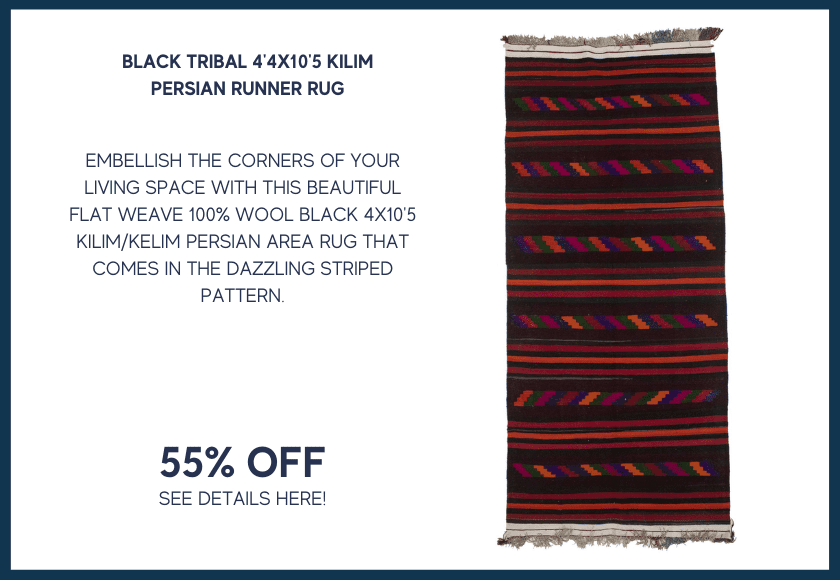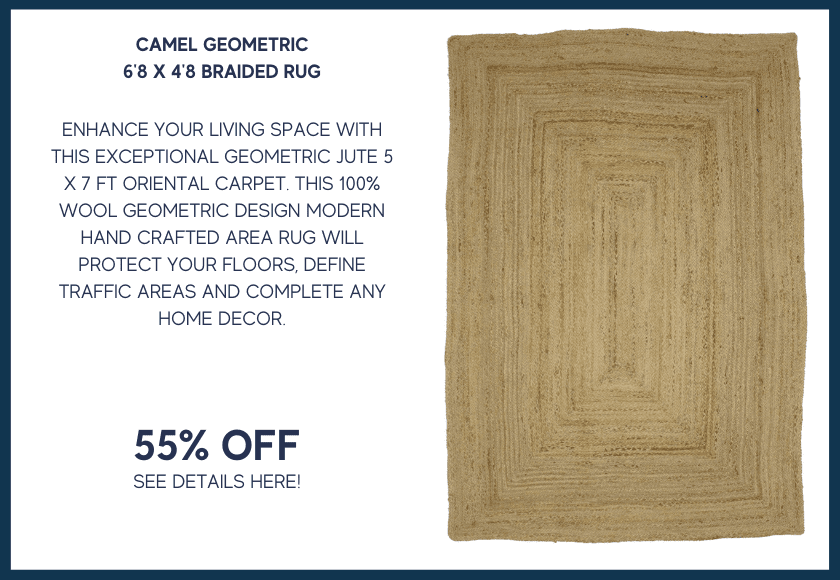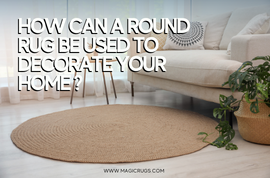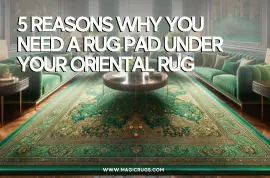These pieces are not merely decorative items but are pivotal in defining the ambiance, character, and aesthetic appeal o...
what is a kilim rug?
Kilim rugs are widely known for two special factors; the first one is their confection process is widely different from most rugs, they are flat-weave rugs and therefore are not only very slim and versatile but more accessible when on a budget; the second one is they are made in vivid and bold colors and patterns, so their design is made to greatly compliment quiet rooms and make them take a stance, have a personality. In this post we will guide you through the basics of Kilim rugs, we are going to take a walk through their history, and we will give you some tips on placing them in your home areas. We are sure you will fall in love with the concept of a flat-weave rug made to take the leading role in your home.
What is a Kilim rug?
A kilim rug is a handmade woven rug, traditionally made in Eastern and Southern Turkey, Iran, Iraq, and Western Afghanistan. The word "Kilim" is an old Turkish word meaning "to spread around". And these beautiful rugs’ particularity is they are a sub-category of flat-weave rugs, which means they are made on a loom rather than being knotted, so they don't have a tufted pile. As the name might have given away, this method of weaving means that flat-weave rugs can be very slim-line and flat, not to mention that their manufacturing is, in consequence, cheaper, making them more affordable.
Kilim rugs are distinguished by the use of geometric shapes and folk symbols, including stylized depictions of birds, animals, and humans. The basic unit of composition is the vertical repeat or "panel". Kilim panels often have a main geometric central design, with secondary motifs placed within the main design, in a contrasting color; often a narrow repeated border surrounds the panel. Commonly all elements are woven in two colors.
The most common shape for flat weave kilim rugs is the rectangular rug which is normally used as a wall tapestry. There are also smaller sizes and shapes, such as prayer-sized rugs and cushion covers.
Where do Kilim rugs come from?
We have talked about Kilim-style rugs, and we know now some of the basics; but what is the origin of Kilim rugs? There is a recorded existence of Kilims since the 13th century and Turkey is known to be the first country in which Kilim rugs were made. The Kilim technique was widespread throughout Central Asia, North Africa, Pakistan, China, Iran, Afghanistan, the Caucasus, and the Balkans.
Kilim weavers still have their production centers in Anatolia and their products still retain good sales at home and abroad. With the spread around Oriental countries, Kilim rugs are generally classified into 4 groups according to their location: Anatolian (Central Turkey), Caucasus (South-Eastern Turkey), Iranian (Middle East), and Kurdish (Northern Iraq).
In Central Asia, today many nomadic peoples weave kilims and produce do not have any inconvenience in producing traditional antique kilim rugs. Some of them continue the tradition of weaving kilims and exporting to Europe, America, and Japan.
Kilim Style Rugs’ Patterns and Designs
The patterns and colors of these textiles reflect the rich history of the region’s many cultures and religions. Kilim rugs vary greatly in size, shape, color, and design. The colors of Kilim rugs traditionally include reds, blues, greens, and light browns but also include yellows and oranges. These colors usually depict natural objects such as flowers or animals like horses.
There are six basic designs seen among kilim rugs: the Tree of Life, the eight-sided star, diamonds or squares, peacocks, and flowers or rosettes, some patterns even reflect astrological knowledge of the day. These patterns often have borders running around them. (Borders are called "fragments" in Turkish). and can perfectly fit into any decor message you would like to convey with them in your home.
Where should I place a kilim rug?
You must always try to find a matching environment to place a kilim rug in. For example, If you're decorating in a space with lots of wood furniture, the kilim rug is the perfect piece. The aged shades of tans and browns create an ambiance that will make any area cozy, warm, and inviting. And if you're looking for a brightly colored rug to go under your coffee table, try a vibrant blue or red kilim instead!
Another factor to consider when choosing where to put your kilim rug is how much light there is in the room, for these rugs’ bold geometric design and bright colors look way better on a naturally illuminated set, where their attributes will be enhanced.
You can also consider how much traffic there is in your room. For example, if you have the company of little ones, who like to play in the house, a small rug might be a good choice, for large rugs can become soiled and lose their luster from the wear and tear...and that's not good for your house! But if you are enjoying a whole space to yourself, you could give free rein to your ideas and install a large comfy, and beautiful Kilim rug.
One last thing to consider is the shape of the room. Kilim rugs make an excellent accent piece for a large or small space. Their bold nature will make them the center of attention for everyone in the room.
Where to find Kilim rugs
Kilim rugs are sought out by those who want to give a spark of life to their rooms. These rugs are eternal protagonists of home decor. They can make the dullest room look alive and beautiful, for their bright and bold colors and designs can immediately attract the attention and praises of every one of your visitors. Interested in having a flat-weave kilim-style rug?
If you feel now interested in these appealing rugs, and you want to find affordable kilim rugs online that will beautifully complement your home, we recommend you stay here at MagicRugs before going somewhere else to buy a kilim rug, for we offer a large selection of kilim rugs and several designs in different sizes and shapes.
Explore more trending collections!
Share:






